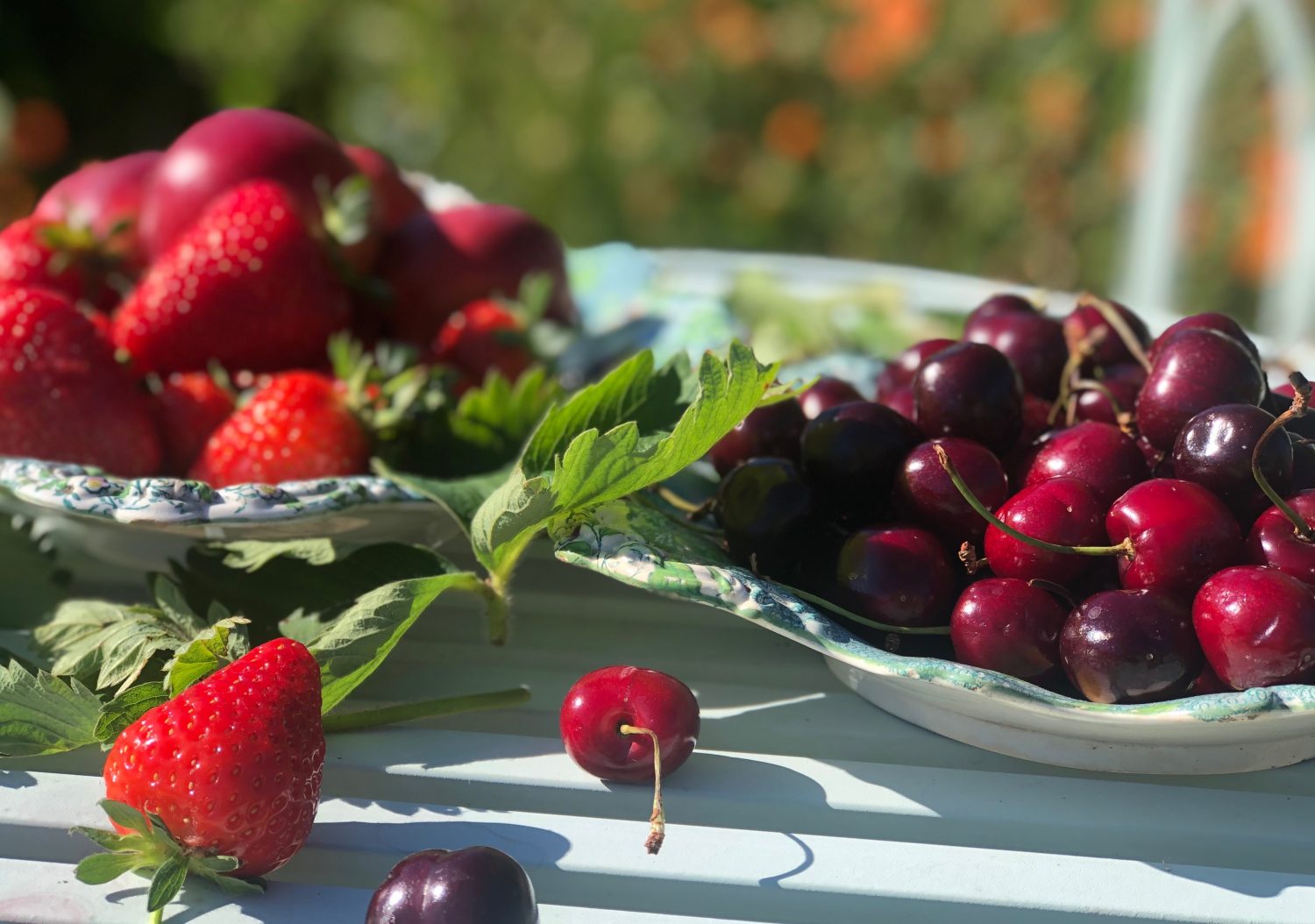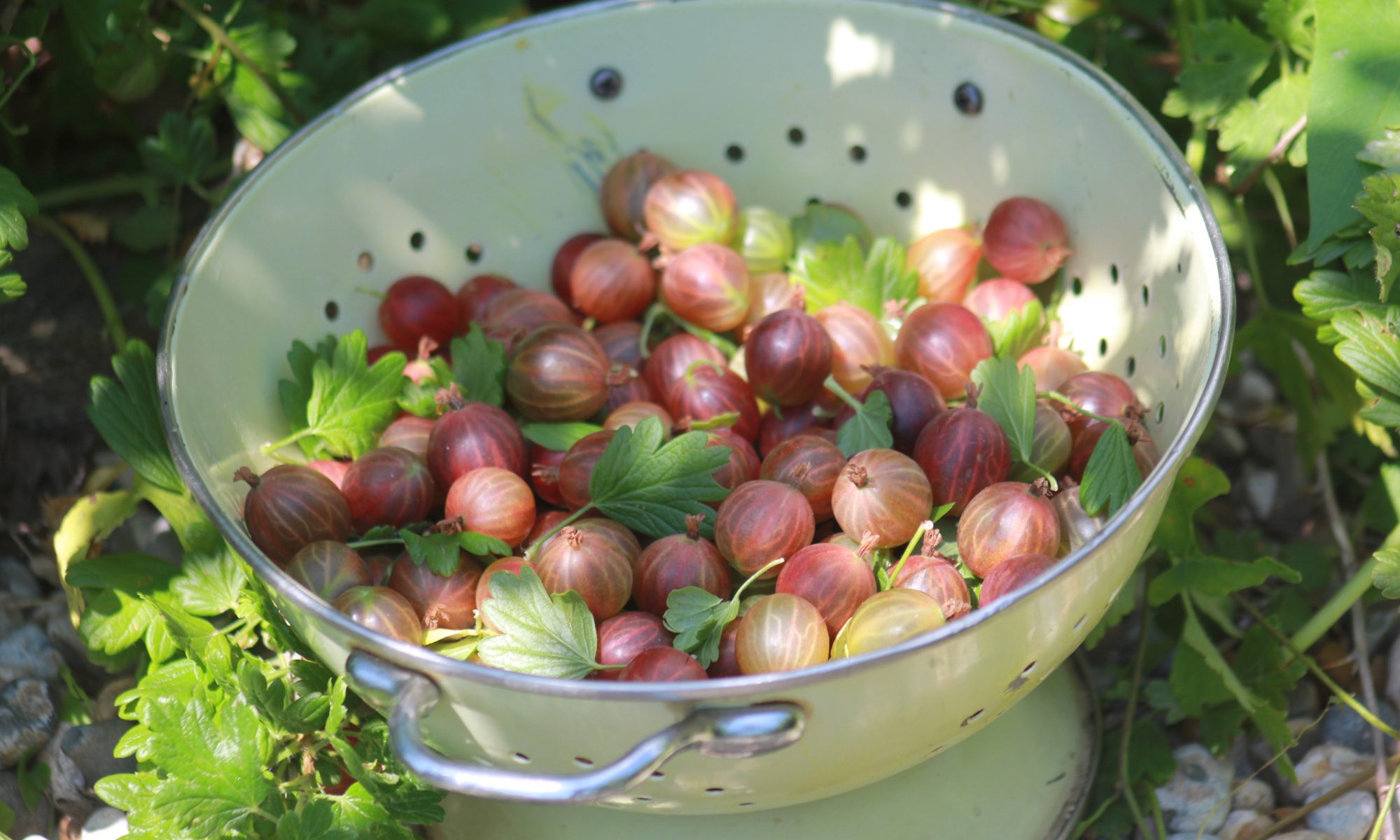Jo Arnell picks the juiciest soft fruit for a summer of plentiful natural sweetness
I must grow some more fruit next year. I’m saying this as I sow seed and set out yet more little vegetable plants. Most vegetables are annuals and have to be grown from scratch each year, which is laborious and time consuming – in fact the process can be endless. You can buy plug plants from nurseries and garden centres, which will save some of the work, but in the winter these annual plants will die and you’ll have to start again next year. Fruit, on the other hand, tends to grow on perennial plants, mainly bushes and trees, so once planted, will give you a crop year after year without too much fuss.
So what counts as a fruit? Botanically speaking the foods that we might recognise as fruits turn out to be rather complicated. Rhubarb, for instance, is really just a stalk and tomatoes (and cucumbers) technically are berries. Just to add to the confusion bananas are berries too, whereas raspberries and blackberries are drupes (or druplets, as they grow in clusters) botanically in the same family as peaches and plums. Apples, pears, strawberries and pineapples are called accessory or ‘false’ fruits because their flesh is not derived from the ovary. But however fruit has been created, they have all evolved to be delicious – so that animals and birds will eat them and then distribute the indigestible seeds away from the parent plant (in a ready made dollop of fertiliser). Clever plants – and lucky us.
Where to grow fruit
You don’t need a huge orchard or dedicated area in which to grow fruit. If space is the issue, there are small versions of fruit trees such as cordons, espaliers and single stemmed versions called minarettes, or ballerinas that will happily grow in a large pot. Soft fruit is easily grown in containers, or use vertical spaces – vines will climb and figs will grow against fences and walls. Blueberries are probably best grown in containers, as they like moist, acidic soil and strawberries will be happy in pots on a window sill or spilling from a hanging basket. Know what conditions they need though. Peaches and apricots need to be grown in the shelter of a warm, sunny wall, but raspberries will grow quite happily in semi-shade.
If you have the space for a fruit garden, then a fruit cage will be a worthwhile investment. Fruit is scrumptious and if not protected it will be snaffled away by all sorts of creatures. Badgers are particularly partial to strawberries – and left unprotected, they and the rats, mice, squirrels and birds will think that you’ve laid a picnic out especially for them. Choose netting for the cage that will stop them getting in, but a gauge (hole size) that will still allow bees in to do the vital job of pollination. Fruit will not form unless it is pollinated.
Some easy and fruitful crops to try
Apples and pears – Choose an apple or pear to suit the space you have available. It is a good idea to get them on dwarfing rootstocks too, so that your tree is manageable and you can reach the fruit when it’s ready to harvest. Apples are not always self-fertile, so will need to have a pollinating partner to ensure a good crop. Check which varieties are compatible (they fall into several groups) before you buy. It’s also worth having both eating varieties and a cooking apple too. Apples and pears will need pruning in the winter to keep them in good shape and to promote fruiting.
Currants – These are very easy to grow, but also need pruning – confusingly at different times. Blackcurrants bear most fruit on new growth, so can be pruned quite hard in late winter/early spring, whereas redcurrants and whitecurrants produce their fruit on old wood (growth made in previous years), so just need the very old wood removing each year and trimming back to keep them compact. They will need netting though, as the birds love currants.
Gooseberries – another really easy crop that can be quite prolific. Gooseberries and currants are generally planted in the winter as bare-rooted plants. The idea with a gooseberry is to prune the young plant carefully in the first few years to establish a ‘goblet’ shaped framework and then cut back to maintain this framework each year. An open shape will ensure air circulation and light to ripen the fruits. Gooseberries can be green or red in variety.
Raspberries like moist, fertile, slightly acidic soils, but they are easy to grow and crop prolifically too
Raspberries – these like moist, fertile, slightly acidic soils, but they are easy to grow and crop prolifically too. Although they prefer a sunny site, they will also grow in part shade. There are two main types of raspberry – summer and autumn fruiting. The early varieties produce their fruit on old wood – growth from the previous year. After fruiting the old canes (stems) are cut out at the base and the strongest of the new will then need to be tied onto supports to provide fruit for the following year. Autumn fruiting varieties are cut back to the ground in late winter, but will produce their fruit on new wood in the late summer and autumn of the same year.
Blueberries – need to be grown in acidic soil, but thrive in containers too, providing you grow them in ericaceous compost. Blueberries make attractive ornamental shrubs and have pretty, scented blossom in the spring, followed by small round dark blue-black fruits and lovely autumn colour on the leaves. They may need protection from birds while they are fruiting.

“Strawberry plants are productive for about three years; after this they should be replaced, but replacement is easy, as the mature plants produce new plants on runners which can be potted up and grown on to provide future crops.”
Strawberries – can be grown in containers, or directly into the ground. To prevent the ripening fruit from becoming damaged by mud and wet, growers used to lay a mulch of straw under the plants (perhaps they were called mud berries before this?). Strawberry plants are productive for about three years; after this they should be replaced, but replacement is easy, as the mature plants produce new plants on runners which can be potted up and grown on to provide future crops. These luscious fruits definitely need netting from hungry animals.
Rhubarb – we can only eat the stalks of rhubarb, as the leaves, in particular, contain toxic oxalic acid. Rhubarb likes rich, moisture retentive soil, so mulch regularly, but be careful not to cover the crowns, as they can be prone to rot. Young plants need a couple of years to establish before any can be picked – this is to allow the crown to become strong and vigorous, so that it will be able to withstand years of cropping. Stems are harvested in spring, when the growth is new. The most tender rhubarb stalks come from those placed under rhubarb forcers (or long upturned flowerpots).
Figs – will become enormous when grown in the open ground, and will need pruning and training. A fig tree can also be stuffed in a pot and they don’t seem to mind (and we can’t hear them if they do) if their roots are constricted. Feed regularly with a high potash fertiliser. At the end of the season remove any unripened fruit, as it will not ripen over winter in our climate. Leave the tiny pea-sized fruits for an earlier crop next year. Figs are a little tender, so can be protected with fleece in a hard winter.
For details of Jo’s gardening courses visit hornbrookmanor.co.uk or contact Jo on 01233 861149
You may also like
Go with the Flow
Sue Whigham shares some valuable new-to-gardening advice I’m sure that by now we should be used to the rain but I’m not entirely sure that we are. We had a dry, sunny day the other day and how everybody’s mood...
Farm Fables
Jane Howard gets to the bottom of why so many ponds have disappeared across the High Weald I have a new passion, almost an obsession, it’s about ponds. And there’s a distinct possibility I might become a bit of a...
Hedge Issues
Sue Whigham takes a meander along nature’s verdant and vital corridors Recently the BBC’s Today programme carried a feature about England’s hedgerows which created a lot of interest among listeners. On the strength of that, Martha Kearney interviewed one of...















